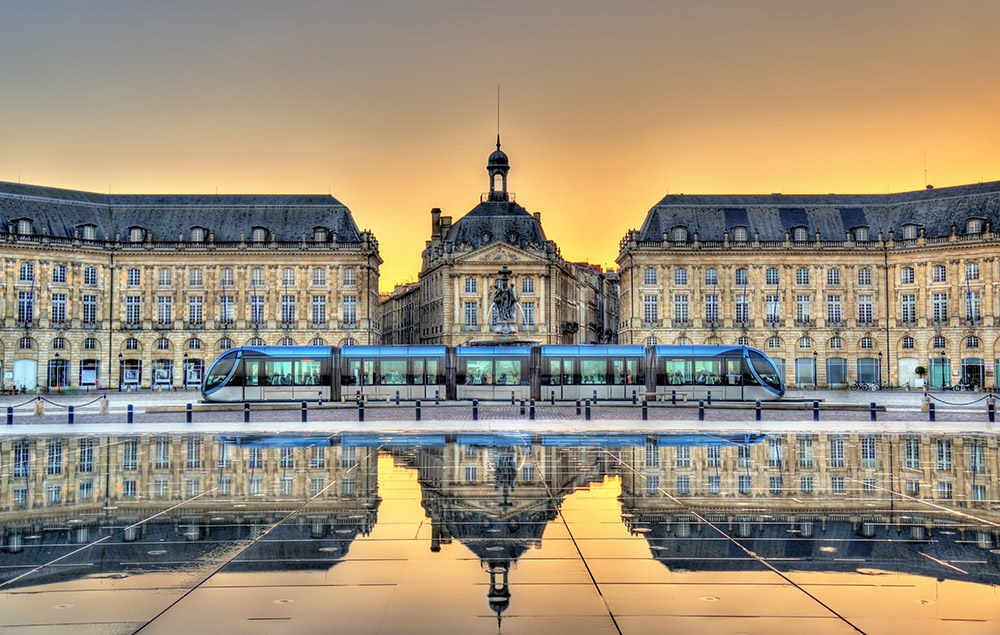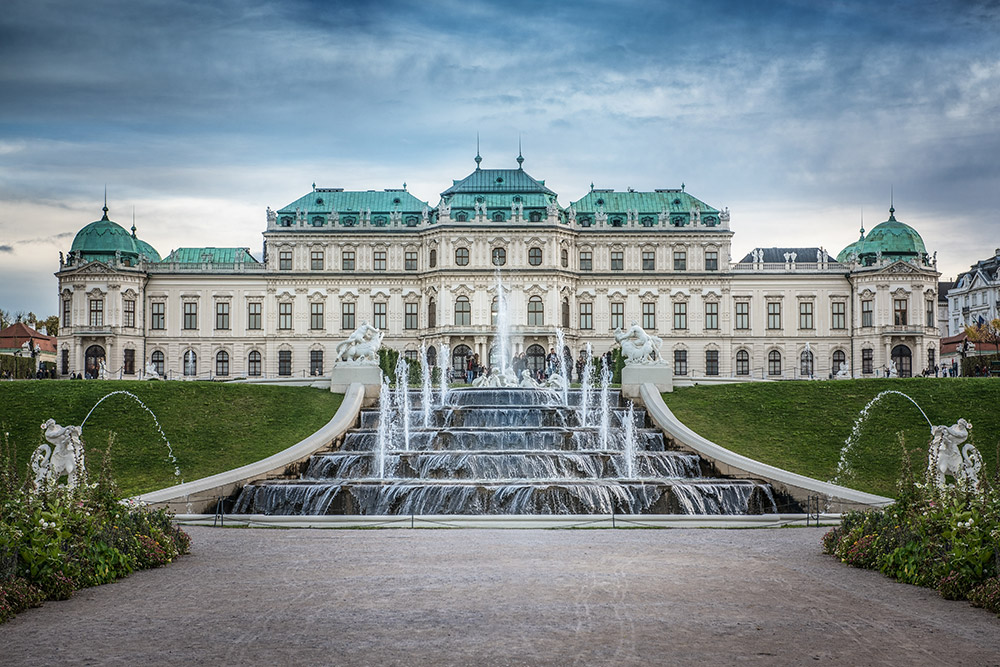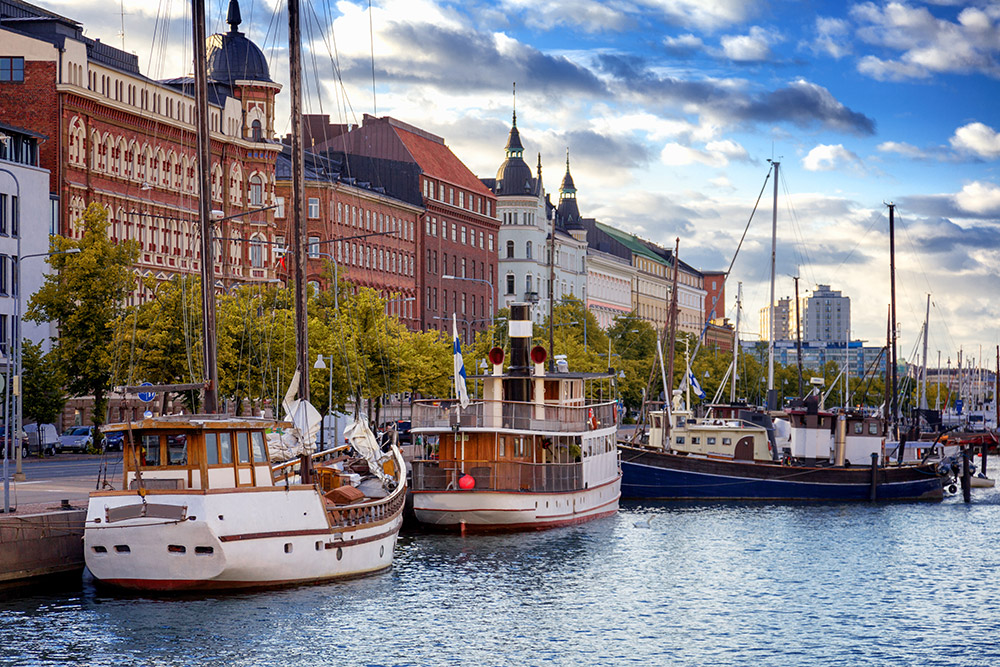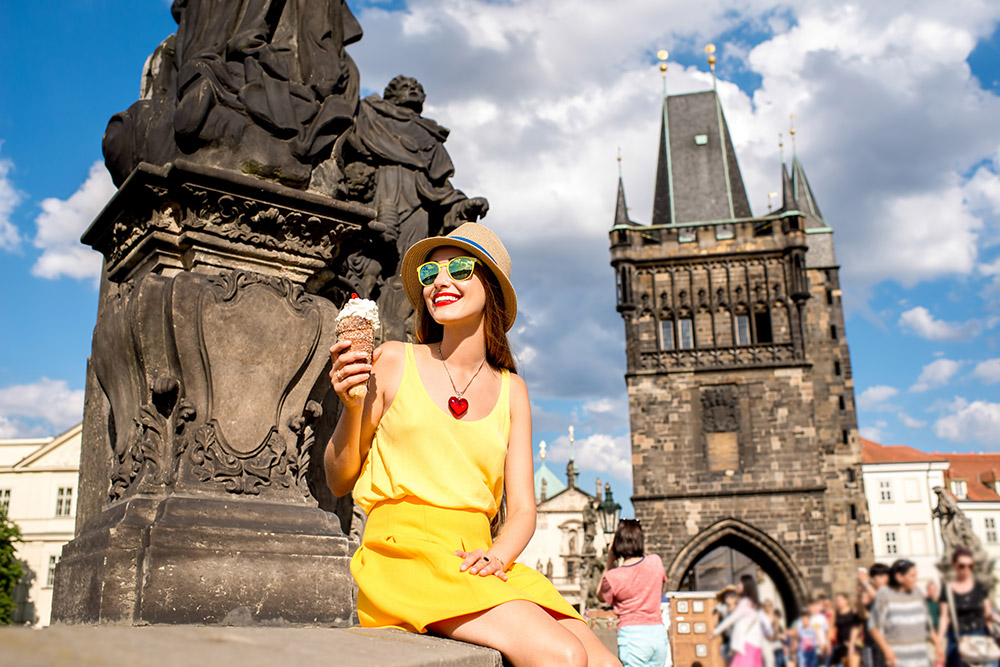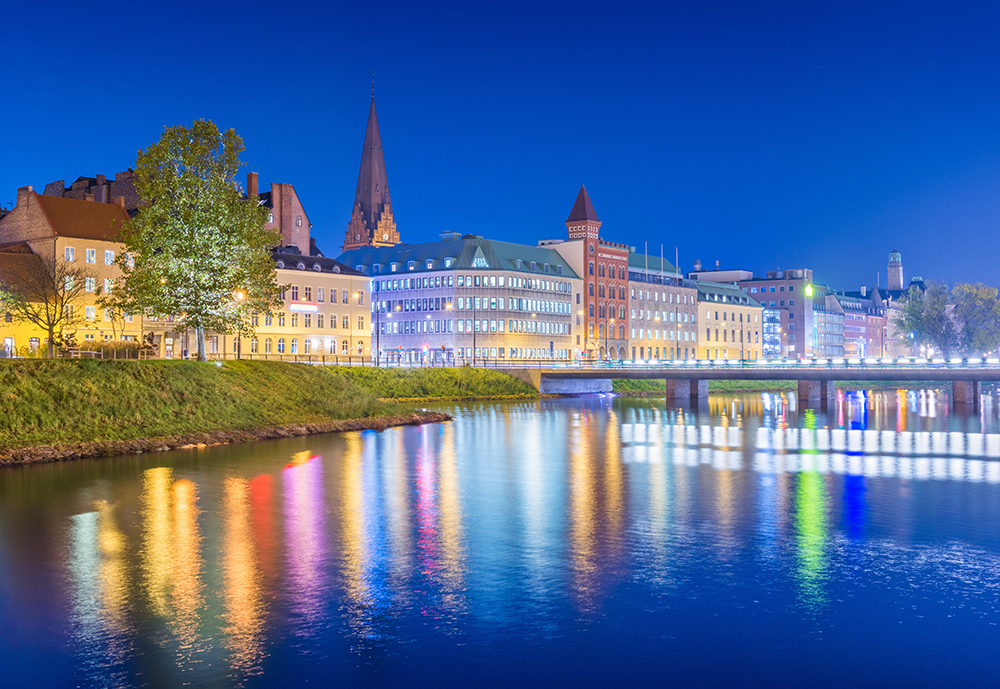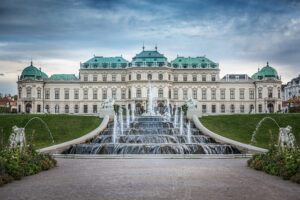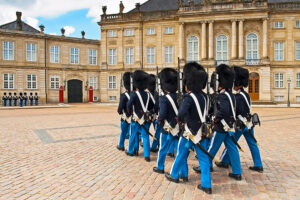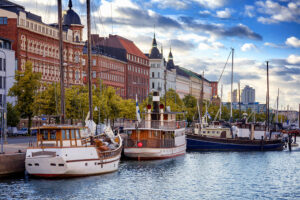In the minds of many people, France is a magical country brimming with history, art, and delectable cuisine. But it offers much more than that! France boasts numerous natural wonders and countless adventures waiting to be discovered. A family excursion to the Dordogne region in southwest France promises a sun-soaked journey through captivating waterways, lush forests, unexplored history, majestic castles, and so much more.
Popular itinerary for A Family Trip to Dordogne, France:
Choose family-friendly lodging, ideally situated near the bustling town of Sarlat-la-Canéda in the Dordogne region. Here, you’ll find a variety of family-friendly accommodations ranging from self-catering cottages to charming bed and breakfasts and hotels equipped with amenities such as swimming pools and play areas.
This 10-day family trip begins in Bordeaux and ends in Toulouse.
Day 1: Bordeaux
Bordeaux, once a major city in the Duchy of Aquitaine, is primarily renowned as an important wine-producing region, having evolved the viticulture traditions first developed by the Romans. Bordeaux also served as a major port, exporting wines and other goods bound for England, and flourishing along the bustling banks of the Garonne River.
Bordeaux is home to the Bordeaux Antiques Fair, known locally as Foire à la Brocante des Quinconces, a massive flea market held biannually in spring and autumn. This outstanding fair takes place at the expansive Place des Quinconces, and it is the oldest flea market and antiques fair in Bordeaux and the Aquitaine region.
Start the day at the Place de la Bourse. Formerly known as Place Royale, Place de la Bourse was originally constructed as a royal palace during the reign of King Louis XV. The architectural ensemble reflects the neoclassical style, with the Palais de la Bourse at its center, serving as the city’s stock exchange.
A modern addition to the Place de la Bourse is the Water Mirror, the world’s largest reflecting pool that also serves as a refreshing spot to cool down during the hot summer days. Wander through the narrow alleys towards Cathédrale Saint-André de Bordeaux, an 11th century Gothic cathedral and the venue for the wedding of Eleanor of Aquitaine and Louis VII of France in 1137. Other noteworthy sites in the city center include the Grosse Cloche, or the “Great Bell,” originally part of the city’s gates and now serving as a public clock for festivities and special occasions. Two other remarkable churches not to miss are the Basilique Saint-Michel, which hosts the Les Puces de St Michel flea market four times a week, and the Église Sainte-Croix de Bordeaux, showcasing a blend of architectural styles, including Romanesque, Gothic, and Renaissance elements.
For lunch, savor a picnic along the picturesque riverbanks of the Garonne River, followed by a leisurely cruise offering panoramic vistas of Bordeaux’s waterfront and iconic landmarks. Children will enjoy this unique perspective of the city, learning about its rich history and architecture along the way.
In the evening, dine at Place du Parlement, a bustling square adorned with charming restaurants and cafes. Select a family-friendly eatery where you can indulge in a delicious dinner together, while soaking up the atmosphere of Bordeaux’s historic center.
Spend the night in Bordeaux.
Day 2: Bordeaux, continued
Explore Cap Sciences, a captivating science museum with interactive exhibits and activities suitable for children of all ages. From hands-on experiments to immersive displays covering topics such as space exploration and renewable energy, the museum offers great entertainment and engaging education for the entire family. Don’t miss the daily workshops that allow kids to experiment for themselves.
For lunch, head to Les Halles de Bacalan, a contemporary food market nestled near the waterfront. Choose from a diverse array of stalls offering fresh, locally sourced produce and prepared dishes tailored to children’s tastes. Enjoy your meal in the market’s inviting seating area or take it to go for a riverside picnic.
In the afternoon, visit the La Cité du Vin a wine museum in an ultra-modern building dedicated to the history and culture of wine around the world. The museum uses sensory and interactive displays to tell the story of wine, transforming your kids into wine experts. Enjoy the museum’s restaurant, bar, and wine shop.
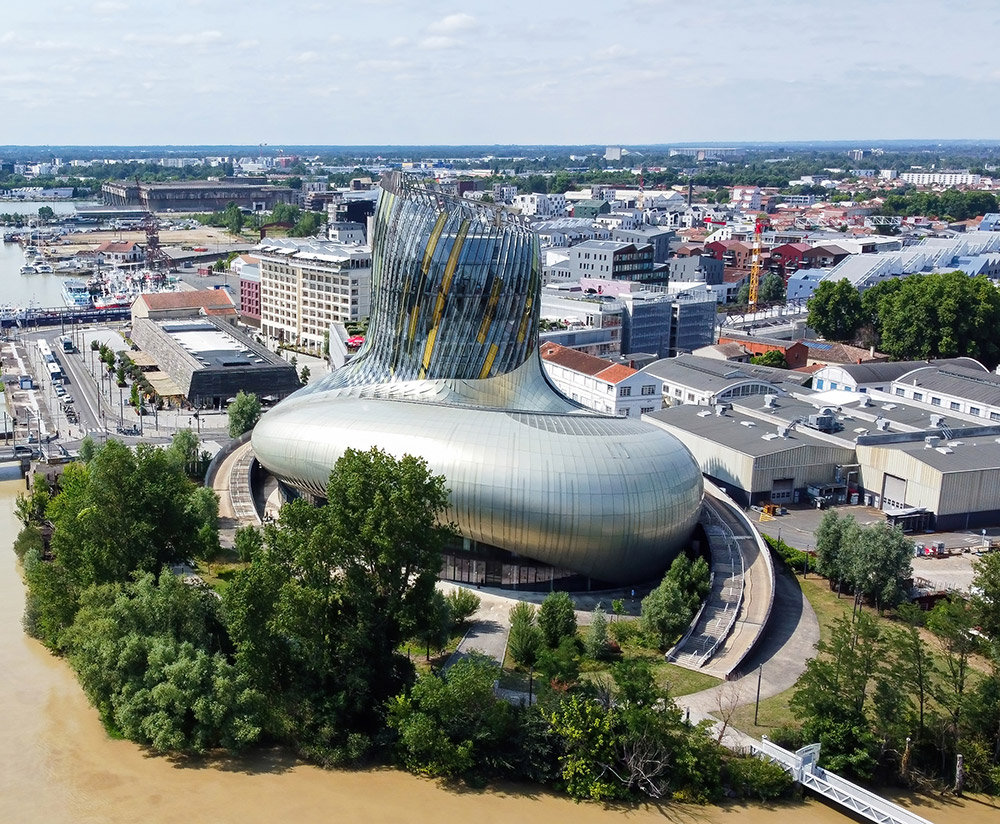
End your day with dinner at Quai des Marques, a waterfront dining and shopping area. Choose from a variety of restaurants offering cuisine from around the world, allowing everyone to find something they enjoy. After dinner, take a leisurely stroll along the riverfront promenade.
Spend the night in Bordeaux.
Day 3: Sarlat-la-Canéda
Sarlat-la-Canéda is the largest town in the Dordogne valley. Originally a market town, it developed during medieval times into an important regional trade center, exchanging goods such as saffron, walnuts, and truffles.
The weekly market is held twice a week, on Wednesdays and Saturdays, so be sure to plan ahead to spend a whole day in Sarlat. The market is located in the center of town, around the Cathedral of Saint-Sacerdos and the adjacent streets.
Sarlat buildings are built of local yellow limestone that gives the town a golden hue, especially at sundown. In front of the cathedral, you’ll see the magnificent Maison de La Boétie, the childhood home of the famous Renaissance writer Etienne de La Boétie. This beautifully preserved house showcases Renaissance style and elegance. For a further glimpse into the opulence of the era, continue your journey up the street to Manoir Gisson, which exhibits the interior of a grand manor.
Before dinner, embrace the local tradition and enjoy an “apéro,” or pre-dinner drinks of cocktails or sparkling wine, at one of the sidewalk cafes.
Spend the night in Sarlat.
Day 4: Sarlat, continued
Explore the Lascaux cave replica near Montignac, where children can marvel at captivating prehistoric cave paintings. The museum offers a Storytelling Tour – Children’s Special, featuring imaginative and specially attired guides who ensure that kids have a unique and engaging experience. Additionally, the complex boasts a cinema and the latest scenographic system to enhance the visitor experience.
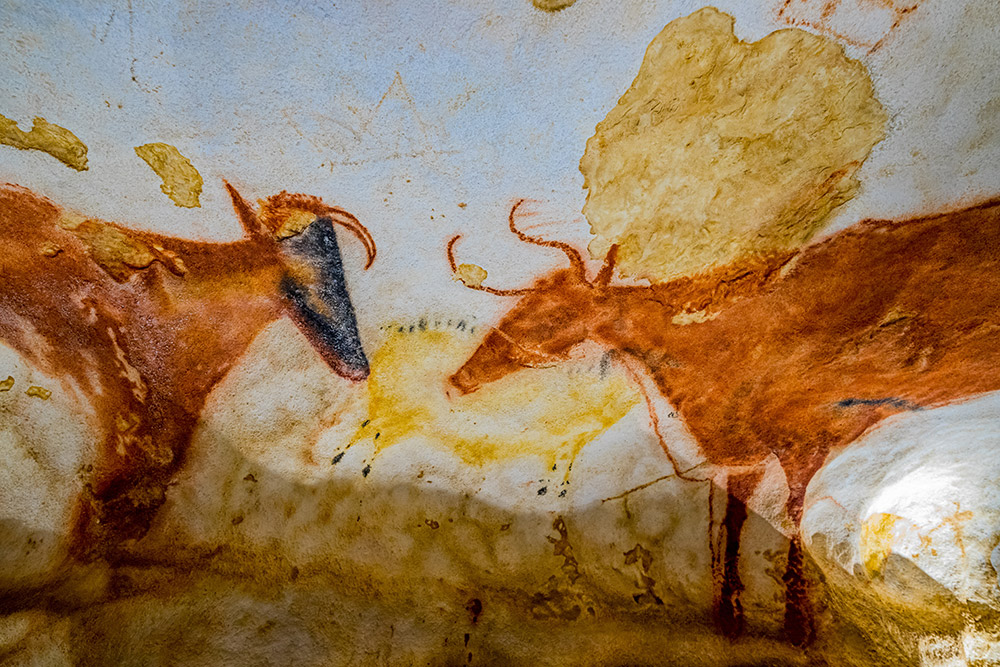
Next, venture to Le Village de la Madeleine, a prehistoric settlement and living farm that provides insight into the living conditions of the Cro-Magnon people who inhabited the region thousands of years ago.
Spend the night in Sarlat.
Day 5: The Dordogne Valley
The Dordogne valley is home to some of the most beautiful villages in France. Today’s journey will be to three of them, all just a short drive from Sarlat.
The first destination is Domme, one of the villages known as a “bastide,” a small fortified town. Domme, surrounded by a defensive wall that was built during the Hundred Years’ War between France and England, is built on a hill overlooking the Dordogne River and valley. Don’t miss the weekly market on Thursdays, offering an array of fresh products ideal for a scenic picnic.
The next stop is La Roque-Gageac, a medieval village built into the limestone cliffs that descend into the river below. Stroll through its charming alleyways, or opt for a more adventurous experience by kayaking on the river – a perfect way to spend a few leisurely hours enjoying the village’s natural beauty.
The third stop will bring you to Beynac-et-Cazenac, arguably the most popular village in the Dordogne valley, renowned for its appearance in numerous films. One of its most famous cinematic appearances was in the 2000 movie “Chocolat,” starring Johnny Depp and Juliette Binoche. The village, characterized by its charming yellow limestone houses, ascends from the riverbank up the cliffside to the imposing Château de Beynac – a medieval fortress associated with King Richard the Lionheart. A visit to this historic fortress is highly recommended. For those who find the climb challenging, you have the option of driving up the hill and parking in front of the castle.
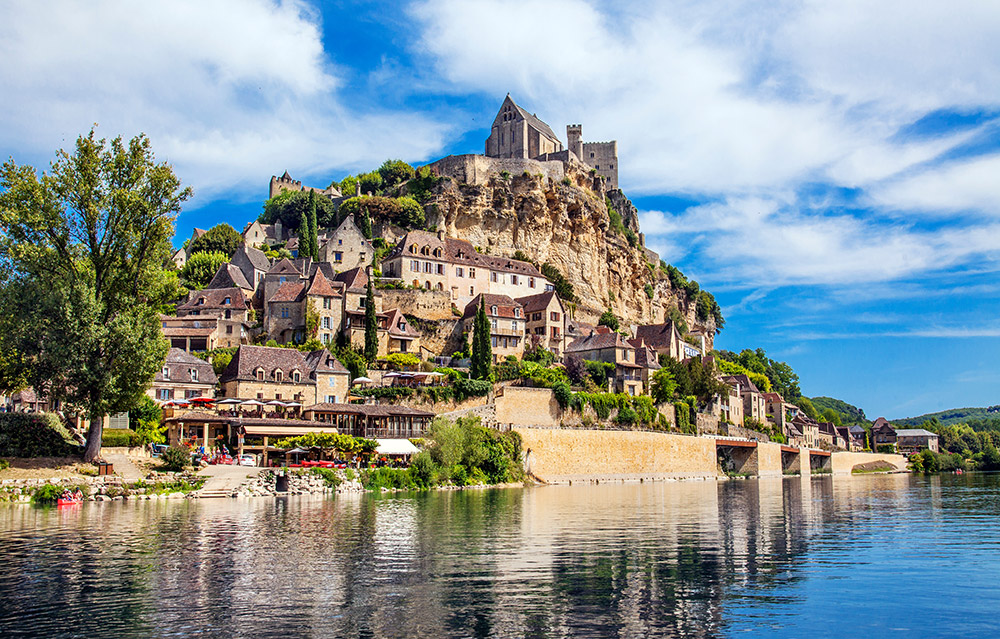
Spend the night in Sarlat.
Day 6: Château de Castelnaud-la-Chapelle
During the Hundred Years’ War, both the French and English constructed fortresses to defend their territory. Directly opposite the Château de Beynac, on the other side of the river, lies the Château de Castelnaud-la-Chapelle. This castle, now transformed into a Middle Ages War Museum, offers kids a fascinating glimpse into ancient weaponry and armor with its display of over 250 pieces.
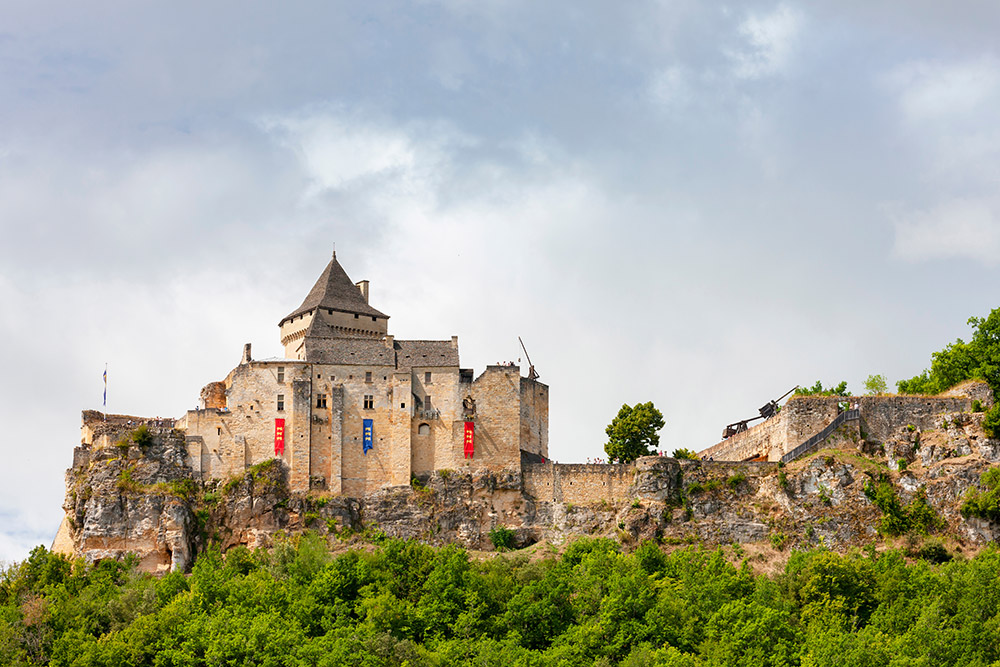
Nearby, you’ll discover the Château des Milandes, the residence of the Caumont family until the French Revolution. It is now renowned worldwide thanks to Josephine Baker, an American actress in France who fought for the French Resistance during World War II. Today, the castle is dedicated to the life of Josephine Baker and offers many activities for children, including a bird of prey presentation and medieval games.
Spend the night in Sarlat.
Day 7: Gouffre De Padirac
Today’s exciting route will lead you to explore some of nature’s most breathtaking wonders. The first destination is the awe-inspiring Gouffre De Padirac. As you approach the site, you’ll be greeted by a seemingly ordinary round hole in the earth. Legend has it that Saint Martin bravely defied the devil by leaping over the abyss on his mule, causing the defeated devil to vanish forever into the depths of the Gouffre. Descending 338 feet into the underground section, you’ll sail in a small boat, passing through the Hall of the Grand Dome adorned with spectacular mineral formations.
After this unforgettable experience, head to Rocamadour, another of the most beautiful villages in south France and a religious site. Rocamadour, initially established as a religious sanctuary, has long been a magnet for pilgrims drawn primarily to its revered black Madonna statue. The village is structured across three levels, symbolizing the three societal orders: the knights dwell in the castle above, the religious clerics reside in the middle, and the common folk who serve both occupy the lower level near the river.
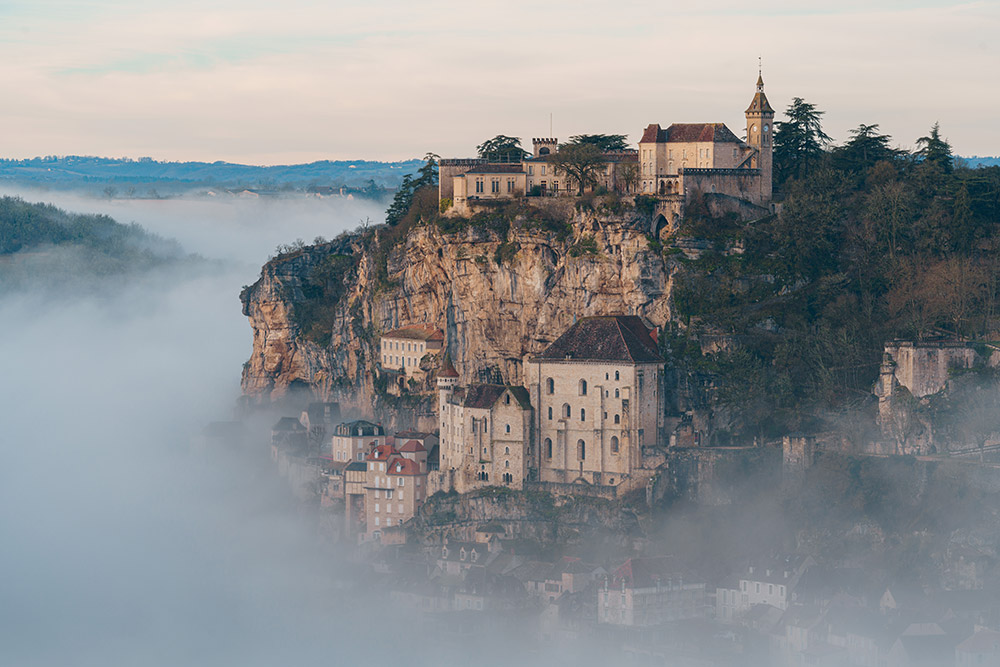
The best way to visit Rocamadour is to park your car near the castle and make your way down to the religious part on foot via the Chemin De Croix – the Path of the Cross- with 12 stations reminiscent of the Via Dolorosa in Jerusalem. From the religious complex to the village, you’ll see Le Grand Escalier, or the Great Stairs.
In the village itself, relish a delightful lunch at one of the restaurants and savor the renowned Rocamadour goat cheese. To return to the parking lot, take the elevator and cable car from the village center.
Rocamadour also hosts an annual hot-air balloon festival, held on the fourth weekend of September each year.
Spend the night in Sarlat.
Day 8: Grotte du Pech Merle and Cahors
Today’s drive will take you further east, towards Grotte du Pech Merle, renowned for its prehistoric caves adorned with remarkable wall paintings. Guided tours of the caves offer insight into the rich history and geology of the region, complemented by a museum showcasing the caves’ significance and the lives of the ancient inhabitants.
From there, drive to the village of Saint-Cirq-Lapopie for a delightful lunch. This picturesque village, nestled atop a cliff 328 feet above the River Lot, is celebrated as one of the Most Beautiful Villages of France. Its charming streets are lined with boutiques and galleries, attracting both artists and visitors. Enjoy lunch in one of the many restaurants in the village.
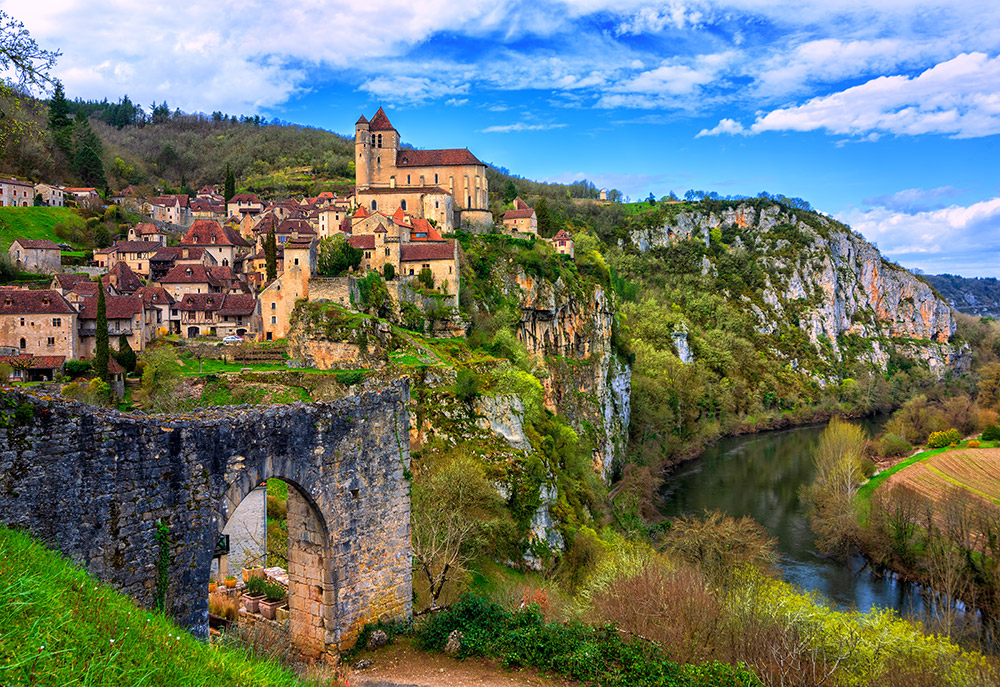
Continue your journey to Cahors, an historic town believed to have been founded by Celtic settlers. Renowned for its distinctive dark red wines, Cahors boasts a scenic landscape dotted with medieval landmarks. Explore the medieval Pont Valentré, adorned with three towers, and marvel at the 900-year-old Saint-Etienne Cathedral with its Romanesque domes. The town center is replete with medieval architecture, while remnants of a Roman amphitheater can be found in the Amphitheater car park.
In the evening, indulge in a delectable dinner at a local restaurant, savoring the flavors of walnuts, truffles, and Cahors wine that characterize the region’s culinary experience.
Spend the night in Cahors.
Day 8: Albi
Today’s excursion is to Albi, situated on the banks of the River Tarn in the Occitane region. This city was once a stronghold of the Cathars, a Christian sect persecuted by the Roman Catholic Church during the 12th century. Later, Albi became the seat of the Archbishop.
The prominent landmarks in Albi include St. Cecile’s Cathedral, renowned for its dual role as a Gothic fortress. Constructed of red brick, it is the largest brick building in the world. Adjacent to the cathedral stands the Bishop’s Palace, now home to the Toulouse-Lautrec Museum. This museum showcases the works of the famed painter Henri de Toulouse-Lautrec, celebrated for his depictions and advertisements of Parisian nightlife.
Stroll the small alleys or take a guided tour of the city, stopping for lunch in one of the charming local restaurants.
Spend the night in Toulouse.
Day 9: Carcassonne
Carcassonne, another town steeped in the history of the Cathars, is perched atop a cliff, strategically positioned to control key routes from west to east (the Atlantic Ocean to the Mediterranean) and from north to south (the Massif Central to the Pyrénées). Once a bastion of the Cathars, Carcassonne faced the brunt of the crusade launched by the Catholic Church, resulting in the forced surrender of its citizens, who were subsequently expelled from their homes with nothing but the clothes on their backs.
Visit the imposing Castle of Carcassonne and the Ramparts and stroll the town’s medieval alleyways. Indulge in the local culinary delights, a delectable fusion of Mediterranean and countryside cuisine. The cassoulet, a traditional hearty stew brimming with various meats and vegetables, is a must-try delicacy, as are forest mushrooms, truffles, nuts, snails, and the exquisite local wines that complement the flavors of the countryside.
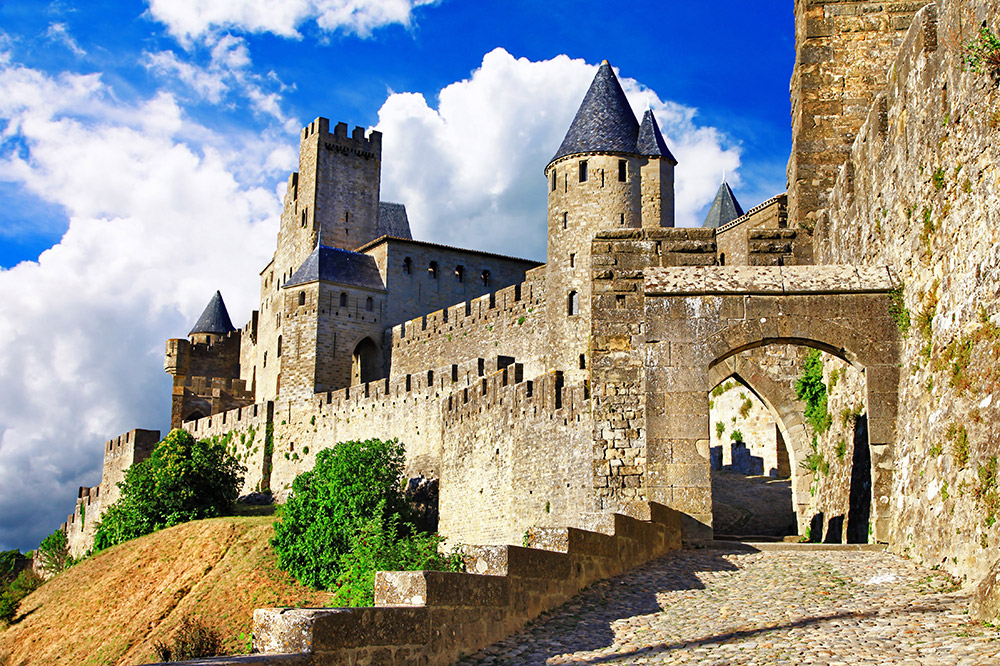
In the newer part of town, known as The Bastide Saint-Louis, you’ll find other notable attractions. The Museum of Fine Arts houses an extensive collection of artistic treasures, offering insight into the region’s cultural legacy and artistic richness. The Saint Michel Cathedral is a magnificent architectural wonder that symbolizes the city’s deep religious and historical roots.
Spend the night in Toulouse.
Day 10: Toulouse
To conclude the trip, your last day is dedicated to exploring Toulouse, often referred to as the “Pink City” due to the pink hues of its buildings. As the capital of the Occitania region, Toulouse boasts a rich history dating back to Roman times and served as the capital of the Visigoth kingdom following the Roman era.
The fourth-largest city in France, Toulouse is renowned today as a hub for the aerospace industry, housing a significant Airbus manufacturing plant. The city center is characterized by prominent landmarks such as Le Capitole, which houses the city hall and justice court. Other notable monuments include La Basilique Saint-Sernin, recognized as the largest Romanesque church in France, as well as La Cathedrale Saint-Etienne and the Couvent Des Jacobins. Take a leisurely stroll along the banks of the Garonne River to soak in the city’s picturesque scenery.


